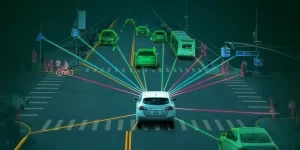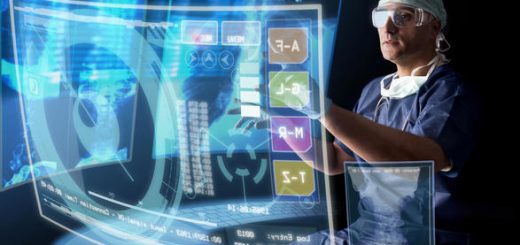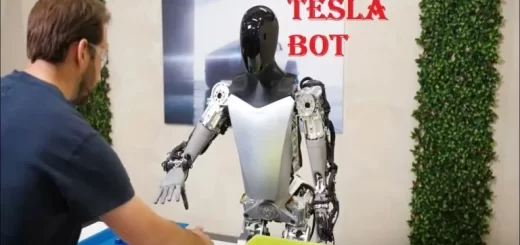Artificial intelligence in transportation advantages, disadvantages and applications
Artificial intelligence is used in the prediction and detection of traffic accidents and conditions (by converting traffic sensors into intelligent agents using cameras), and it is used in resolving control & optimization problems, Autonomous Trucks have been initiated all over the world in recent times, Autonomous trucks will save costs, lower emissions, and improve road safety as compared to traditional trucks with human drivers.
AI in transportation
Artificial Intelligence can be defined as a technology that powers machines with human intelligence, AI Machines can mimic humans, automate manual tasks, and learn on the go just like humans, Artificial Intelligence can reduce carbon emissions, It can reduce vehicle expenses, and reduce fuel utilization.
AI in transportation and infrastructure can collect traffic data to reduce congestion and improve the scheduling of public transport, Transport is affected by traffic flow, and AI will allow streamlined traffic patterns, Smarter traffic light algorithms and real-time tracking can control higher and lower traffic patterns effectively, This can be applied to public transport for optimal scheduling and routing.
Transportation can use Artificial Intelligence (AI) in mission-critical tasks such as self-driving vehicles carrying passengers, AI is used to predict the paths of pedestrians and cyclists, it will decrease traffic accidents and injuries, it will allow for more diverse transportation usage and an overall reduction in emissions.
Transportation problems arise when system behavior is too difficult to model according to a predictable pattern, affected by things such as traffic, human errors, or accidents, In such cases, the unpredictability can be aided by AI, AI can use observed data to make or predict decisions appropriately, NNs and GAs are perfect AI methods to deal with these types of unpredictability.
Machine learning could be used to predict and prevent traffic jams, Artificial intelligence improves public safety, Safety of citizens when traveling by public transport in urban areas is improved by tracking crime data in real-time, This will allow the police to increase their efficiency by patrolling and keeping the citizens safe.
AI drives the evolution of the next generation of Intelligent Transportation Systems, Artificial Intelligence and its branch Machine Learning enable transportation agencies, cities and private car owners to use the power of modern computer and communication technologies and make mobility a much safer and activity, High-end commercial CPUs, GPUs and IoT communication technologies such as LTE, 5G and LPWAN have created possibilities of several applications of Big Data and Artificial Intelligence in the Transportation sector.
Artificial intelligence can be applied to traffic management and decision-making systems to enhance and streamline traffic management and make our roads smarter, Traffic management systems can recognize the physical and environmental conditions that can lead to heavier traffic flow and congestion, They can automatically suggest alternate routes to relieve any traffic that has been formed.
Applications of AI in the transportation industry
Artificial intelligence can be used in designing an optimal transit network for a given community, developing an optimal work plan for maintaining and rehabilitating a pavement network, and developing an optimal timing plan for a group of traffic signals, Artificial intelligence can be used for identifying specific classes of drivers based on driver behavior, It is used for decision support systems for transportation planning.
Artificial intelligence is used in law enforcement capacities, This can be a challenge to human officers due to the speeds at which vehicles and passengers can come into and out of view, with artificial intelligence, By using advanced analytics and data processing capabilities, AI could help to detect and identify when a driver is drinking or texting behind the wheel and alert any officers within the local area to intercept them.
Artificial intelligence can manage the transmission and processing of received data as well as optimize connectivity to ensure the best connection, Artificial intelligence can be used in nonlinear prediction of the behavior of systems in which inputs and outputs, Traffic demand modeling, or in modeling the transportation infrastructure health as a function of traffic, construction and weathering.
AI can be used in signal control of traffic at road intersections, ramp metering on freeways, dynamic route guidance, and positive train control on railroads, AI can be used in automatic incident detection, It is used in image processing for traffic data collection and identifying cracks in pavements, or bridge structures and transportation equipment diagnosis.
Self-driving trucks can take over a lot of our dirty work such as plowing snow and collecting garbage, They could be utilized in freight, capable of transporting 2,000,000 pallets per year, Driverless Bus is a safer way to travel, Already driverless buses have been popping up across Europe, using sensors, cameras, and GPS to safely ferry passengers to their destinations.
Self-driving trucks can reduce the number of accidents on highways and increase productivity, Artificial intelligence is vital within these driverless vehicles due to their processing, control and optimization capabilities, AI will help make autonomous vehicles safer and much more widespread.
Drone taxis are one of the most exciting and innovative AI applications in transportation, Pilotless helicopters present a unique solution to combat carbon emissions, eliminate traffic congestion, and reduce the need for expensive infrastructure construction plans, drone taxis will help people reach their destination much sooner, minimizing their commute time.
Electric vehicles become common, and many countries are taking the initiative to incorporate smart technologies into their roads and highways, China has already built a smart highway that can charge electric vehicles as they drive, Many smart road designs incorporate solar panels for vehicle-charging, as well as sensors and AI feedback to monitor traffic patterns and congestion more effectively.
Autonomous Rail Rapid Transit is a train system that runs without rails, operating instead on a virtual painted track which the train’s computer system detects and follows, fully autonomous trains, using machine learning and AI in the transportation of freight and passengers have been trialled in many countries.
Driverless Trains can carry greater numbers of passengers, as space no longer has to be reserved for the driver’s cab, Railway Transportation is equipped with sensors including cameras that capture track, front and back, and the cab of the locomotive, The data from the sensors is fed to machine-learned analytic applications that aggregate the data, enabling onboard real-time decision-making.
Autonomous Delivery Trucks can change the way we receive goods, Many recent cars feature sophisticated driver assist programs that can help the most inexperienced drivers on the road, This includes sensors to detect obstacles and other vehicles, as well as GPS routing, Sensors allow the driver to know if they are approaching an obstacle to stop the car entirely to avoid a crash.
AI in transportation is not limited to land, Remote-controlled ships are currently in development, The ships’ crews will be entirely land-based, meaning a reduced risk of harm to employees and more room on the vessels for freight, The primary challenge faced by developers is the risk of the software being hacked and ships diverted.
Airport Face-Scanning is the future of flying, Airports could be ditching traditional passports in favor of face-scanning technologies, Scanners are already used in some airports to confirm the identities of passengers before allowing them to board, The advent of autonomous planes could yield an enormous profit, Though a great deal of piloting relies on automatic technologies, but a fully autonomous plane could potentially present some security risks.
The Trainline app allows passengers not only to book and buy their train tickets but also find a vacant seat on the vehicle in real-time, The bot asks passengers to report how busy their carriage is and uses this data to advise them on where to sit, The app presents price prediction, allowing passengers to avail of the cheapest possible fares for their journey.
Drones (unmanned air vehicles) deliver goods and passengers, AI in transportation by drones is a solution to potential human errors, In all modes of transport, including aviation which is the safest mode of transport, there is advanced work on boosting safety levels by removing the human factor errors by leveraging new technologies such as artificial intelligence, machine learning and advanced sensors.
Advantages of AI in the transportation industry
AI will reduce traffic accidents and increase safety, The number of accidents involving truck drivers at night is a large issue and can be improved with the use of smart unmanned vehicles, The personal and financial costs of these accidents are quite substantial, and labor costs in this sector will decrease with the increased use of AI, providing higher profits for industry players.
Auto-pilot or complete unmanned vehicles can allow the driver to have a snooze without causing severe accidents, Some AI trucks have a special feature of predicting accidents as well as health issues of people around the truck like detecting a heart attack and alerting the emergency services automatically with the location and details of diagnosis.
Artificial intelligence (AI) will create opportunities for automakers to reduce production costs and introduce new revenue streams, including self-driving technology, predictive maintenance, and route optimization, long driving hours and stopping for a break will no longer be a concern with fully automated fleets.
Artificial intelligence technologies increase the ability to process and predict data and outcomes more than humans, so, travel and transport operators will schedule public and private transportation services in an improved manner.
Artificial intelligence could play a big role in developing new ways in which to deal with pollution as well as helping to enable scientists and engineers to come up with much more environmentally friendly methods to run vehicles and machinery for travel and transportation.
Nowadays, there is an app for everything, This includes AI-powered real-time traffic updates through services such as Google Maps, Using location data collected from users’ smartphones, these apps can predict and analyze traffic conditions in your local area to better inform your travel plans, These apps may face direct competition from autonomous vehicles themselves.
Sensors and cameras embedded everywhere on roads collect a large voluminous amount of traffic details, This data is sent to the cloud, where analysis and traffic pattern revelation will be done with big data analytics and an AI-powered system, and traffic predictions can be gleaned from data processing.
Commuters can be provided with traffic predictions, accidents, or road blockages, people can be notified about the shortest route to their destination, helping them travel without any hassles of traffic, AI can be used to not only reduce unwanted traffic but improve road safety and reduce wait times.
AI-controlled warehouse mostly depends on robots to stock, find, and pick products. Artificial Intelligence can analyze the selling patterns and control the supply and demand to keep the stocks in minimum quantity without harming the supply chain operations. AI machines can work day in and day out without a break. The possibility and chances of mistakes and blunders go down, and AI makes the supply chain more productive in the long run.
Disadvantages of AI in transportation
Self-driving vehicles can be hacked, so cybersecurity is a serious concern, Anyone capable of hijacking the system of any specific AI-powered vehicle might choose to do so, irrespective of motivation, Such an incident could start a media frenzy and cause intense social panic.
AI-driven systems for traffic management require enormous funds, so, countries and communities with fewer resources might not be able to embrace such solutions as quickly as wealthier ones could. some countries do not support autonomous driving vehicles. Reconstruction and big changes would be required to introduce self-driving vehicles.
AI is not an independent system, To ensure efficient working, there is a need for human assistance and control. AVs can save lives, but they may scratch or kill someone at some point, AI intelligence isn’t based on handling data yet, it’s about learning and getting wiser after each operation. It transforms into an unpredictable checking framework after some time, yet this is why it’s hard to see and recognize mistakes when they happen.
AI will impact many blue-collar jobs in the transportation industry, Automakers can use AI to adapt to a changing transportation landscape, However, costs will still be a major barrier to adoption, as more than half (53%) of global business and IT leaders cited the high costs associated with AI technology as a major deterrent to adoption.
Artificial intelligence technologies will enhance the efficiency of the systems it integrates with, however, power will need to be used much more intelligently by all of the systems to truly utilize the potential of newer technologies.
How is AI used in transportation?
Artificial intelligence (AI) is transforming the transportation sector in numerous ways, from making our commutes smoother to paving the way for self-driving cars.
- Autonomous vehicles: This is perhaps the most well-known application of AI in transportation. Self-driving cars use a combination of sensors, cameras, radar, and AI algorithms to navigate roads without human input. AI helps these vehicles perceive their surroundings, make decisions, and react to changing conditions.
- Traffic management: AI can analyze real-time traffic data to predict congestion, optimize traffic light timing, and reroute vehicles. This can reduce travel times and fuel consumption for everyone on the road.
- Fleet management: AI-powered systems can track the location and status of vehicles in real time, allowing fleet managers to optimize routes, schedule maintenance proactively, and improve overall efficiency.
- Safety improvements: AI-based driver-assistance systems can warn drivers of potential hazards, such as pedestrians or oncoming traffic. AI can also be used to monitor road conditions and detect accidents.
- Smart parking: AI can help drivers find available parking spots quickly and efficiently using cameras and sensors to identify open spaces in parking lots.
- Traffic management: AI helps analyze real-time traffic data to optimize traffic light timing, reroute vehicles around congestion, and predict traffic flow, AI helps reduce travel times, fuel consumption, and emissions.
- Personalized travel experiences: AI can be used to recommend the best route for a trip based on real-time traffic conditions, weather, and user preferences. AI can also be used to personalize public transportation experiences, such as providing real-time arrival and departure information.
Future Flying cars advantages, disadvantages, design, types and developments
Robotic cars (Self Driving cars) advantages and disadvantages
Unmanned aerial vehicle (UAV) (Drones) uses, advantages and disadvantages
Global Positioning System (GPS Tracking System) advantages and disadvantages





I am stunned by the information that you have on this blog. It shows how well you fathom this subject.
Thank you for your comment
This is most informative and also this post most user-friendly and super navigation to all posts… Thank you so much for giving this information to me.
You are welcome
A great piece that sheds much-needed light on emerging technology like AI and Machine learning in Transportation and its impact on the business as there are many new details you posted here. Sometimes it is not so easy to provide a top artificial intelligence in Transportation solution without custom knowledge; here you need proper development skills and experience. However, the details you mention here would be very much helpful for the beginner.
Thank you